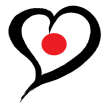Got PMDD? Listen to Your Body
Replacing "Exercise" with Movement

I'm a big fan of yoga. Well, duh, I'm a yoga teacher. It's been such a huge part of my PMDD management and overall wellbeing that I honestly can't imagine my life without it.
Yet, when I recommend yoga or some kind of movement for PMDD, there are a few women who inevitably say something like, "Yeah, right. I can barely pick myself up off the floor, but I'm supposed to find the energy to jump up and down?"
Well, no. Not necessarily.
There's a misconception of what is meant by exercise. It's an unfortunate word, really, because it brings to mind gym shorts and squats, "no pain no gain", and for many people, something unpleasant and tedious. I don't know what your high school PE experience was like, but mine did nothing for my motivation, let alone my self-esteem.
My advice? Let's try to let go of everything we know about "exercise" and instead, let us use a better word: movement. Exercise is about pulling yourself out of your bed in the morning as you grumble and hauling your ass off to the gym on a cup of coffee. Movement is staying curled up in your jammies, taking your time to stretch like your cat. Exercise is pushing yourself to accomplish something that you don't really want to do. Movement is reveling in the simple pleasure of feeling good.
We need movement! We are, in fact, inseparable from it. Our hearts beat. The blood circulates. Our cells are dancing. We are in constant motion. So adopting a movement practice isn't so much about "exercise" as it is about becoming a fully conscious participant in all that natural movement and learning to interact with it in playful and beneficial ways.
So, for the moment, let's put aside preferred forms of movement or sport (dancing, rowing, swimming, running) and focus instead on something deeper... how our body feels on any particular day and how to use movement to help it feel better. This has been the key for me to its therapeutic benefits, and this change of perspective can open you up to a whole new realm of self care.
First, take time each day, maybe upon waking, to check in with yourself. How is your body feeling? Where's your energy on a scale of 1-to-10? Are you sore and stiff? Are you energized? Do you have pent up energy to expel? Emotional energy to express? Once you've taken an inventory of sorts, then you can decide what to do next. Give yourself some liberty from your regular commitments and regimens so that you can actually do what your body wants. Ask yourself, "What would feel nurturing to me today? What would help me feel my best?"
Then consider the different approaches one can take to movement and choose your "exercise" accordingly:
Slow
When your body feels like a sluggish old sack of potatoes and the last thing you want to do is "jump up and down," turn to something slower and gentler. Walking out in nature, yin yoga, a nice swim—these are just some of the possibilities when your body is telling you to go slow. Sometimes, going slow is the antidote to a racing mind. When our monkey minds are doing all the jumping up and down for us, this is the ideal time to slow our pace.
Vigorous
Is the monthly rage too much? When you are full of fire, be it creative or emotional, vigorous forms of movement might fit the bill. Think rebounding or running. Think hot and sweaty. Kundalini yoga has some awesome kriyas for working with challenging energies like anger and frustration. It's also good to do something more rigorous when you need to shake sticky thoughts out of your head. Feeling the passion of self-hatred or shame? Shake it out! Got the blues? Give a few minutes of Baghra or African dance a try.
Restorative
Feeling drained, empty, emotional, or bone weary? Maybe you are fighting off a cold. Any of these conditions point to doing something nurturing and nourishing. Restorative yoga is great for it. But you might find sunbathing or getting massage equally beneficial. Sometimes, we accomplish more by being still. And sometimes, we simply need to receive and tune into our body's natural rhythms.
Somatic
Do you feel out of touch with yourself? Or are you needing to relieve a certain body area (shoulders, hips, neck, etc.) of chronic pain? You might want to investigate forms of movement that teach better proprio- and interoception, our ability to sense our body in space and time, and our ability to sense our inner landscape. Somatic movement or dance forms that are more intuitive can help.
Strong
Feeling out of control? Need to build your sense of inner strength? Maybe today is the day to lift some weights or practice some other type of strength training. Just make sure you're not using this form of movement to numb yourself to your emotional pain. We want to be strong but responsive to life... not cut off from it.
Make sense?
I hope so.
Of course, there may be other approaches to add, but hopefully, this gives you a better idea of how to help yourself with movement. Let your body, not your mind, choose. It will love you for it!
About the Creator
Cheeky Minx
Cheekyminx writes intimately about PMDD (Premenstrual Dysphoric Disorder) and hosts the Facebook page PMDD Life Support, a place where women with PMDD can find information and inspiration to cope. Your contributions are appreciated!






Comments
There are no comments for this story
Be the first to respond and start the conversation.